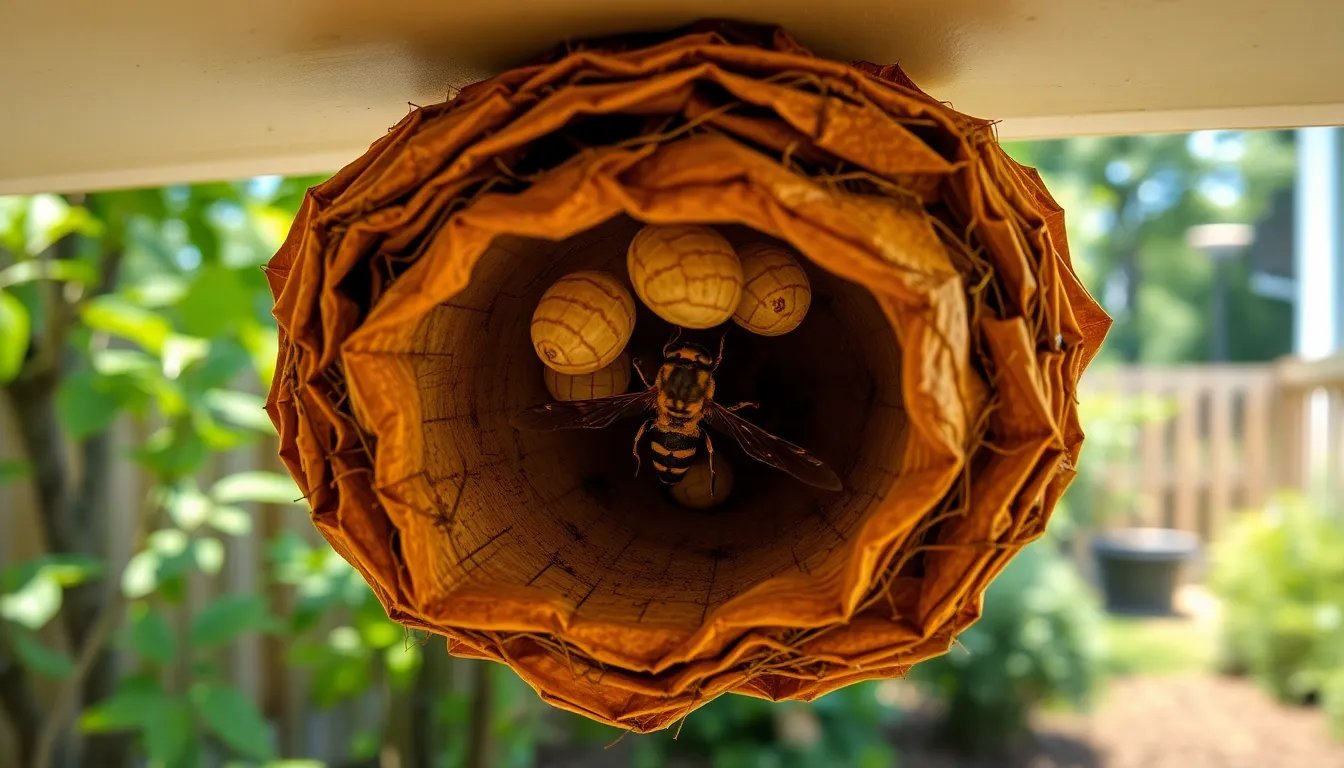When summer rolls around, the sun’s shining, and the BBQ is fired up, the last thing anyone wants is an uninvited swarm of wasps crashing the party. These buzzing bandits can turn a delightful outdoor gathering into a scene straight out of a horror movie. But fear not, because pest control for wasps doesn’t have to be a nightmare.
Understanding how to deal with these winged nuisances can save your summer fun and maybe even your sanity. From clever traps to expert strategies, this guide will help you reclaim your backyard without breaking a sweat—or a picnic basket. So grab your favorite drink, sit back, and let’s dive into the world of pest control wasps, where you’ll learn to outsmart these pesky pests with ease and maybe even a chuckle or two.
Table of Contents
ToggleOverview of Pest Control Wasps
Pest control for wasps plays a crucial role in maintaining enjoyable outdoor environments. Wasps are known for their aggressive behavior, especially during late summer. Recognizing this behavior helps in formulating effective control strategies.
Various types of wasps exist, including yellow jackets, paper wasps, and hornets. Each type exhibits different nesting habits and aggression levels. Understanding these distinctions aids in targeting the right control methods.
Effective pest control techniques include traps, baits, and exclusion methods. Traps attract wasps using scents, effectively reducing their population. Baits can lure wasps away from gatherings, minimizing interactions with people.
Exclusion methods focus on sealing entry points around homes. Securing windows, doors, and vents prevents wasps from nesting indoors. Regular inspections of outdoor areas also help identify and eliminate potential nesting sites.
Chemical sprays provide immediate relief in severe infestations. Using these sprays requires caution. Targeting nests at night, when wasps are less active, increases safety.
Natural alternatives exist for those preferring eco-friendly solutions. Essential oils like peppermint and clove repel wasps without harsh chemicals. Keeping outdoor dining areas clean minimizes food sources that attract these pests.
Understanding wasp behavior and employing multiple control strategies offers effective pest management. Adopting these measures ensures outdoor spaces remain enjoyable during gatherings.
Types of Wasps Involved in Pest Control

Understanding the types of wasps assists in effective pest management. Key species include paper wasps and yellowjackets, both known for their specific behaviors and nesting preferences.
Paper Wasps
Paper wasps are identifiable by their slender bodies and unique, open-cup nests. These wasps construct nests under eaves, decks, or shrubs, often in quiet areas. They display a relatively mild temperament and typically won’t sting unless provoked. Employing traps designed to appeal to their scavenging nature can lessen their presence significantly. Additionally, maintaining cleanliness around outdoor spaces reduces food sources, making it less likely they linger.
Yellowjackets
Yellowjackets rank among the more aggressive wasp species. They often build nests underground or in wall cavities, which can easily become a problem during late summer. Their attraction to food makes outdoor gatherings an inviting target. Effective pest control methods include bait traps that can capture large numbers quickly. When nests are discovered, it’s best to treat them after dusk due to the aggressive behavior of these wasps when disturbed. Taking pro-active measures effectively mitigates their threatening presence.
Methods of Pest Control for Wasps
Effective management of wasps requires a variety of methods. Choosing the right approach can enhance outdoor enjoyment during gatherings.
Chemical Control
Chemical control methods involve the use of insecticides designed specifically for wasps. Products that contain pyrethroids or organophosphates prove effective against wasps. Sprays should often be applied in the evening when wasps are less active. It’s crucial to follow the manufacturer’s instructions for safety. Protective clothing is important to minimize risk during application. When dealing with severe infestations, targeted treatments on nests can significantly reduce populations.
Biological Control
Biological control employs natural enemies to manage wasp populations. Introducing predators like certain birds or insects helps maintain balance in the ecosystem. Additionally, parasitic wasps can target specific species of pest wasps. Utilizing traps that incorporate natural lures attracts wasps while minimizing harm to non-target organisms. Promoting biodiversity in local gardens can create an environment that discourages wasp nesting. Selecting local plant species may also attract beneficial insects that prey on wasps.
Safety Precautions When Dealing with Wasps
Safety precautions are essential when addressing wasp issues. First, individuals should wear protective clothing, such as long sleeves and pants, to minimize skin exposure. Protective gear reduces the likelihood of stings during encounters.
Second, avoiding bright colors and floral patterns during outdoor activities helps to reduce attraction to wasps. Neutral clothing colors often make individuals less noticeable. Maintaining a calm demeanor is crucial; sudden movements or loud noises can provoke aggressive behavior.
Third, individuals must keep food and beverages covered. Leaving these items exposed draws wasps and increases the chances of an encounter. Sanitation practices in eating areas include promptly cleaning spills and discarding food waste.
Fourth, utilizing well-marked traps ensures clarity in wasp capture areas. These traps can attract wasps from a distance, helping to divert them away from gatherings. Individuals should also position traps away from high-traffic areas to avoid attracting attention to themselves.
Fifth, securing nests should occur after careful observation. Treating nests at dusk, when wasps are less active, significantly reduces the risk of stings. Engaging pest control professionals for removal also ensures safer handling of larger or more aggressive nests.
Finally, being aware of allergic reactions is vital. Individuals with known allergies should carry an epinephrine auto-injector and ensure friends and family know how to use it. Remaining vigilant allows for rapid response if stings occur.
By following these safety precautions, individuals can significantly reduce the risks associated with wasp encounters, ensuring summer gatherings remain enjoyable and worry-free.
Managing wasps effectively is key to enjoying outdoor spaces during the summer. By understanding their behavior and nesting habits, individuals can implement targeted control strategies that minimize disruptions. Utilizing traps, baits, and exclusion methods helps create a wasp-free environment while maintaining safety.
Safety precautions are equally important. Wearing protective clothing and practicing sanitation can significantly reduce encounters with these pests. For those with allergies, it’s vital to take extra precautions to ensure peace of mind during gatherings.
With the right knowledge and tools, anyone can tackle wasp challenges and enjoy a worry-free summer outdoors.




